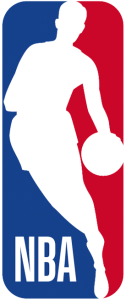Why Wizards were ultimate winners in Bradley Beal trade with Suns

Yesterday at 12:10 AM
It’s been a year and a half since the Washington Wizards traded Bradley Beal to the Phoenix Suns, so why bring it up now? While the trade itself is old news, the story is still developing and will continue to for years to come.
Beal was benched ahead of the Suns’ (16-18) matchup with the Philadelphia 76ers (14-20) on Monday amid a turbulent campaign. Phoenix is one of the NBA’s biggest disappointments this year, and the 31-year-old is having one of the worst seasons of his career.
Beal’s numbers aren’t terrible, as he’s averaging 17.8 points per game on 48% shooting. However, he had the Suns’ worst net rating (-9.3) when on the court, and their best when off of it (3.3). A player’s net rating measures their team’s point differential per 100 possessions while they’re on the floor.
There are a variety of reasons for this, namely chemistry and fit issues. For example, Phoenix had a net rating of -13.7 points with both Beal and Devin Booker on the court before Monday, via NBA Stats. While Beal’s scoring talent is undeniable, his lack of impact in other areas makes him redundant on a team that also has Booker and Kevin Durant.
Nobody knew that Beal’s Suns era would go this badly, least of all Wizards general manager Will Dawkins and team President Michael Winger. They had both just been hired when the trade went down, and they were simply trying to get the three-time All-Star’s $50.2 million average annual salary off the books.
Bradley Beal trade is long-term gift for Wizards
Beal’s contract was, and still is, one of the worst in the league. The fully guaranteed deal runs through 2026, with a player option for the ’26-27 season, via Spotrac. On top of that, it includes a no-trade clause, which gives the 2012 No. 3 overall pick more leverage than he deserves based on his production.
With Washington’s new regime planning a rebuild, it made sense for both sides to move on, even though Beal had just signed the supermax contract a year earlier. That’s why the Wizards shipped the Florida alum to Phoenix for Chris Paul, Landry Shamet, Bilal Coulibaly, and the following draft picks:
- 2024 first-round pick swap (Washington didn’t swap its No. 2 overall pick a year later, selecting Alex Sarr)
- 2024 second-round pick (Wizards later traded this pick)
- 2025 second-round pick
- 2026 first-round pick swap
- 2026 second-round pick
- 2027 second-round pick
- 2028 first-round pick swap
- 2028 second-round pick
- 2030 first-round pick swap
- 2030 second-round pick
At the time, it wasn’t an eyebrow-raising haul. Getting a past-his-prime legend, a backup, a rookie, and no first-round picks for a player who averaged over 30 points per game from 2019-21 is underwhelming, but Beal’s contract hamstrung Washington in negotiations.
However, the Wizards then flipped Paul for Jordan Poole, Patrick Baldwin Jr., Ryan Rollins, a 2027 second-round pick, and a top-20 protected 2030 first-round pick in a deal with the Golden State Warriors.
Fast forward to now, and Poole is eighth in All-Star voting among Eastern Conference guards, while ESPN named Coulibaly the NBA’s 25th-best player under 25 years old. Of course, both players are still ascending, as Poole is 25 and Coulibaly is 20.
Meanwhile, Beal and the Suns are descending, and their “Big Three” isn’t getting any younger. Booker is in his prime at 28, but Beal is 31 and Durant is 36. It’s only a matter of time before the band breaks up.
From now on, Washington benefits from Phoenix’s failure. If the Wizards’ rebuild goes according to plan, they’ll be a playoff team by 2027 and a championship contender by 2030. Meanwhile, the Suns have no direction, and they could easily be worse than Washington in the coming years.
That would not only give the Wizards high second-round picks, but it would also give them better first-round picks than they would’ve had before the Beal trade. Depending on how bad Phoenix becomes, the ’26, ’28, and ’30 first-round pick swaps could result in lucrative draft choices.
Ordinarily, a team’s draft capital becomes less valuable as it rises the standings, but Washington has a chance to play both sides of the fence moving forward. Turning a crippling contract into two exciting young players and a draft pick bounty is a front-office masterclass that Dawkins and Winger deserve praise for.
While the Beal and Paul trades both aged well, it’s even more impressive considering that these were the first major moves that Dawkins and Winger made after getting hired. They inherited a disaster and turned it into a promising rebuilding project.
Additionally, both moves were heists. Paul left the Warriors after just one season, and Beal is on his way out too, via Arizona Sports 98.7 FM’s John Gambadoro. The 6-foot-4, 207-pounder’s no-trade clause and salary are the main obstacles to him getting dealt before the NBA’s Feb. 6 deadline this season, and the Suns likely won’t get back as much as they gave up to get him.
Winning these trades doesn’t guarantee the Wizards’ long-term success, but it makes that dream more likely.
The post Why Wizards were ultimate winners in Bradley Beal trade with Suns appeared first on ClutchPoints.


